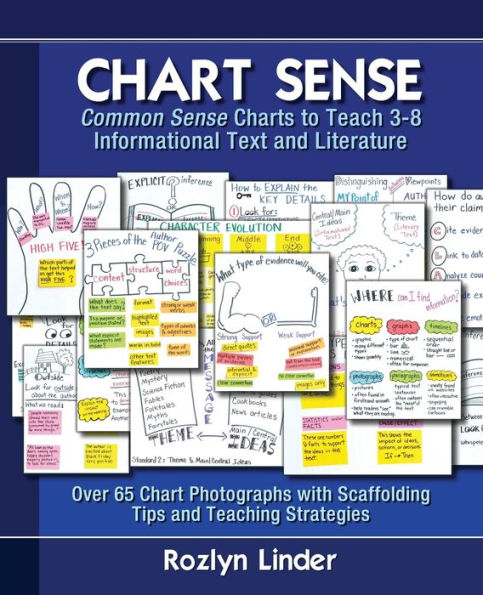Table of Contents
Introduction 10
Why Charts? 13
Standard 1 Textual Evidence 25
Explicit or Inference? 26
High Five 28
Stepping Up the Evidence 30
Textual Evidence Sentence Starters 32
Thinking About Text! 34
What Does it Mean to Analyze Text? 36
What I Know 38
What Type of Evidence Will You Cite? 40
Standard 2 Main/Central Idea 43
How to Explain the Key Details 44
It's All About the Message 46
Look for Details 48
Powerful Details 50
Thinking About How Ideas Develop in a Text 52
Thinking About the Main Idea 54
Two Different Ways to Think About Theme 56
Types of Themes 58
What Types of Details Do Authors Use? 60
What's the Message? 62
Standard 3 Connections & Interactions 65
Character Evolution 66
Connections and Relationships 68
Feelings, Motivations, Traits, Actions 70
Ideas, Events, Individuals 72
Let's Compare 74
Literary Interactions 76
Where to Look for Connections 78
Why? Why? Why? 80
Standard 4 Word Play 83
Good Readers Use Context Clues 84
What Do We Know About How Words are Used? 86
What Does This Word Mean? 88
Word Detectives 90
Word Play 92
Standard 5 Text Structure 95
Analyzing Literary Structures 96
Deconstructing Text 98
Development Paragraphs 100
Literary Text 102
Name That Structure 104
Physical Structures 106
Structure and Ideas 108
Structure/Purpose/Signal Words 110
Text Structure 112
Text vs. Text 114
Using Text Features 116
Standard 6 Point of View 119
Author's POV 120
Author's POV Sentence Starters 122
Distinguishing Between Viewpoints 124
Firsthand or Secondhand? 126
Outside/Inside Clues 128
Three Pieces of the Author POV Puzzle 130
Standard 7 Beyond Text 133
Evaluate Different Mediums 134
How Do These Formats Compare? 136
Learning From Words and Visuals 138
My Learning 140
Print or Digital? 142
Reading is Not Just About the Words 144
Where Can I Find Information? 146
Standard 8 Evidence & Arguments 149
Building Blocks of an Argument 150
Evidence Suitcase 152
How Do Authors Support Their Claims? 154
Sound Reasoning or Not? 156
Supporting Arguments 158
Standard 9 Multiple Sources 161
Book Face-Off 162
Comparing Texts 164
A Critical Eye 166
Fact or Fiction? 168
How Does the Old Influence the New? 170
Same Author, Different Text 172
Notes 174
Final Thoughts 177



